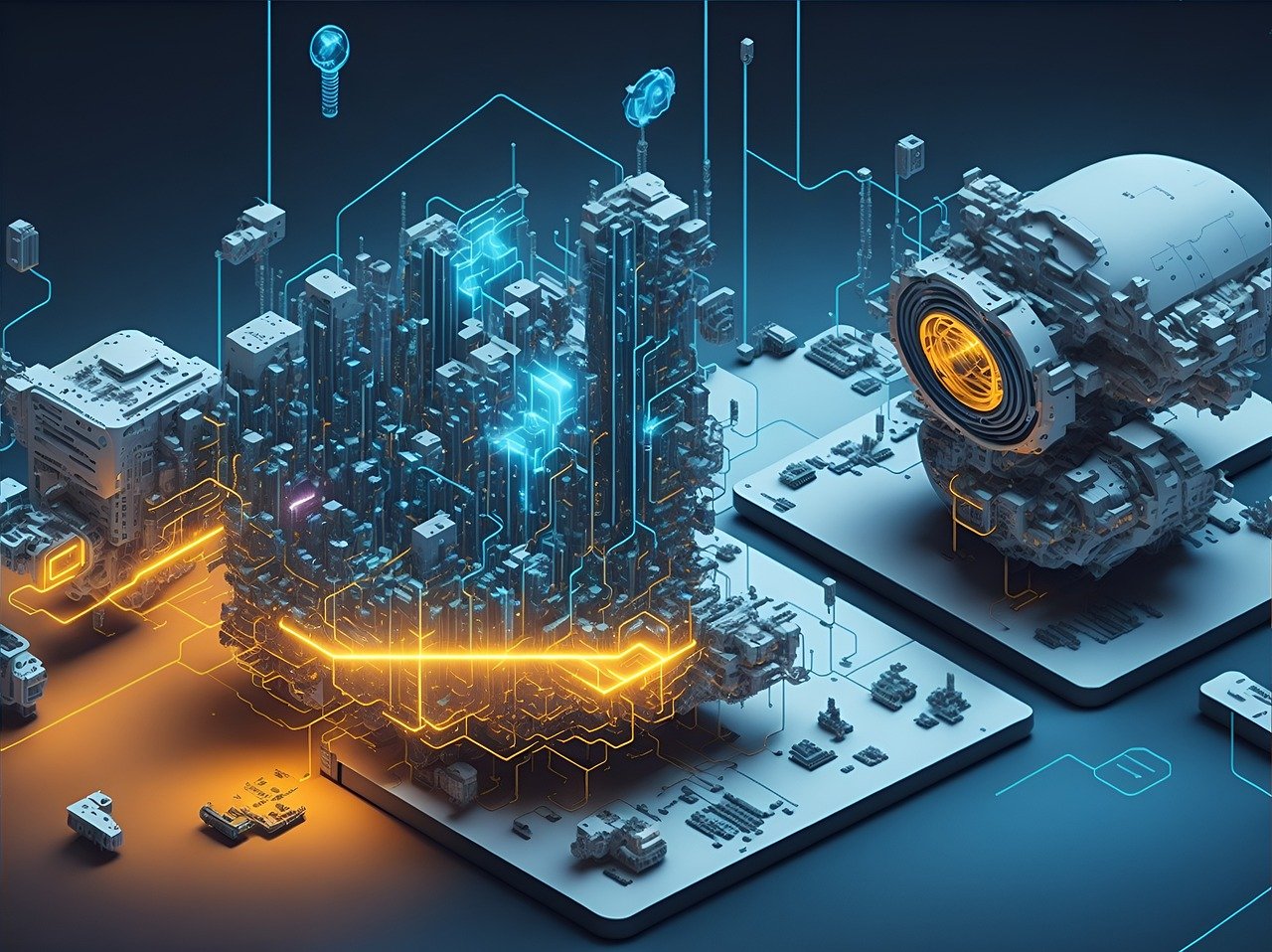Introduction
Artificial Intelligence (AI) is transforming various industries and revolutionizing the way we live and work. Two key branches of AI, deep learning and machine learning, play significant roles in enabling machines to learn and make intelligent decisions. In this article, we will delve into the world of AI, exploring the similarities, differences, and applications of deep learning and machine learning.
Artificial intelligence (AI) is a branch of computer science that deals with the creation of intelligent agents, which are systems that can reason, learn, and act autonomously. Machine learning is a subset of AI that deals with the development of algorithms that can learn from data. Deep learning is a type of machine learning that uses artificial neural networks to learn from data.

What is artificial intelligence (AI)?
AI is a broad term that encompasses a wide range of technologies. Some of the most common AI technologies include:
- Machine learning
- Natural language processing
- Computer vision
- Speech recognition
- Robotics
Understanding Machine Learning
Machine learning is a subset of AI that focuses on the development of algorithms and models that allow computers to learn and make predictions or decisions without being explicitly programmed. The core idea behind machine learning is to enable machines to learn from data and improve their performance over time. This is achieved through the use of mathematical and statistical techniques that identify patterns and relationships in the data.
Machine learning can be categorized into three main types: supervised learning, unsupervised learning, and reinforcement learning. In supervised learning, models are trained on labeled data, where the input and corresponding output are provided. Unsupervised learning, on the other hand, involves training models on unlabeled data, allowing them to discover hidden patterns and structures. Reinforcement learning focuses on training models to make decisions based on rewards and penalties, learning through trial and error.
The applications of machine learning are vast and diverse. In healthcare, machine learning algorithms can assist in diagnosing diseases and predicting treatment outcomes. In finance, machine learning is used for fraud detection and credit scoring. In marketing, it helps in personalized advertising and customer segmentation. Machine learning also plays a significant role in natural language processing, recommendation systems, and autonomous vehicles, among many other domains.
Deep Learning: The Next Evolution of Machine Learning
Deep learning takes machine learning to the next level by leveraging artificial neural networks with multiple layers. It aims to simulate the structure and functionality of the human brain to enable machines to learn and make decisions at a more complex level. Deep learning algorithms, such as Convolutional Neural Networks (CNNs) and Recurrent Neural Networks (RNNs), are capable of automatically learning hierarchical representations from data, leading to state-of-the-art performance in various domains.
CNNs are primarily used in computer vision tasks, where they excel at recognizing and analyzing visual patterns in images and videos. They have achieved remarkable success in tasks such as image classification, object detection, and image generation. RNNs, on the other hand, are well-suited for sequential data processing, making them valuable in natural language processing and speech recognition tasks.
The applications of deep learning are vast and expanding rapidly. In computer vision, deep learning models have been used for facial recognition, autonomous driving, and medical image analysis. In natural language processing, deep learning techniques power language translation, sentiment analysis, and chatbots. Deep learning also finds applications in recommendation systems, gaming, and drug discovery.
Differences between Deep Learning and Machine Learning
While deep learning and machine learning are related fields, there are several key differences between them:
- Complexity and Hierarchy of Features: Machine learning algorithms typically rely on manually engineered features, whereas deep learning algorithms automatically learn complex hierarchical features from the data.
- Amount of Labeled Data Required: Deep learning algorithms often require large amounts of labeled data to achieve optimal performance, while machine learning algorithms can sometimes work with smaller labeled datasets.
- Hardware and Computational Requirements: Deep learning models, especially larger ones, demand significant computational resources, including high-performance GPUs, to train and infer predictions. Machine learning models generally have lower hardware requirements.
- Performance and Accuracy: Deep learning models have achieved state-of-the-art performance in various domains, especially in tasks that involve complex patterns and large-scale datasets. Machine learning models, while less complex, can still perform well in many scenarios.
Advantages and Limitations of Machine Learning
Machine learning offers several advantages:
- Flexibility and Interpretability: Machine learning models can be more interpretable, allowing humans to understand the reasoning behind their predictions or decisions. They also offer flexibility in incorporating domain knowledge and defining specific rules.
- Challenges of High-Dimensional Data and Overfitting: Machine learning models can handle high-dimensional data efficiently and are less prone to overfitting, where models become too specialized in the training data and fail to generalize to unseen data.
- Dependency on Labeled Data and Feature Engineering: Machine learning algorithms heavily rely on labeled data for training, and feature engineering is often required to extract relevant features from raw data, which can be time-consuming and domain-specific.
However, machine learning also has limitations:
- Dependency on Labeled Data: Machine learning algorithms require labeled data for training, which can be costly and time-consuming to obtain, especially in domains where labeling is subjective or requires expert knowledge.
- Challenges of High-Dimensional Data: Machine learning models may struggle with high-dimensional data, as the number of features increases, leading to the curse of dimensionality and reduced performance.
Advantages and Limitations of Deep Learning
Deep learning offers several advantages:
- Ability to Automatically Learn Complex Features: Deep learning models have the capability to automatically learn complex hierarchical features from raw data, eliminating the need for manual feature engineering.
- Dependency on Large-Scale Labeled Data: Deep learning models can achieve state-of-the-art performance when trained on large-scale labeled datasets, allowing them to capture intricate patterns and nuances in the data.
However, deep learning also has limitations:
- Dependency on Computational Resources: Deep learning models, particularly large ones, require significant computational resources, such as high-performance GPUs, to train and make predictions. This can limit their accessibility and scalability.
- Lack of Interpretability and Explainability: Deep learning models often function as black boxes, making it challenging to understand the reasoning behind their predictions. This lack of interpretability can pose challenges in domains where transparency and accountability are critical.
Synergy Between Deep Learning and Machine Learning
Rather than viewing deep learning and machine learning as competing approaches, there is significant synergy between them. Researchers and practitioners often combine techniques from both fields to achieve enhanced performance and efficiency.
One approach is transfer learning, where pre-trained deep learning models, trained on large-scale datasets, are used as a starting point for solving new tasks with smaller datasets. This allows leveraging the knowledge and representations learned from one domain to another, reducing the need for extensive training.
Another approach involves hybrid models that combine deep learning and machine learning techniques. For example, using deep learning for feature extraction and machine learning algorithms for the final decision-making or prediction stage. This fusion of techniques can lead to improved accuracy and interpretability.
In conclusion, deep learning and machine learning are two prominent branches of artificial intelligence that have transformed various industries and applications. While machine learning focuses on enabling machines to learn from data and make intelligent decisions, deep learning takes it a step further by leveraging neural networks with multiple layers to automatically learn complex features.
Both approaches have their advantages and limitations, and they often complement each other in practical applications. By understanding the differences and synergies between deep learning and machine learning, we can harness their power to unlock new possibilities and advancements in the field of artificial intelligence.

10 thoughts on “Exploring the World of Artificial Intelligence: Deep Learning vs Machine Learning”